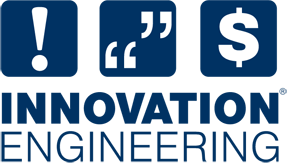I have a button that I really like, it says “Question Reality”. As a person doing simulations, it has an attitude that’s kind of fun. However at the end of the day, it is reality that our simulations must match, if they are to be of any value.
While it is generally assumed that measurements provide reality, it can be a dangerous assumption. The measurement doesn’t even need to be wrong to be dangerous, it can just be misunderstood.
The goal of the TCAD engineer is to reconcile the simulation to reality, and to do this it is necessary to reconcile the measurements to reality as well. SRP and SIMS measurements provide a good illustration of this.
A SRP is very often ordered to get the doping profile. This is wrong. Why?
- It doesn’t measure the doping profile, it gives the carrier density. These generally agree but can also diverge substantially under some circumstances.
- The carrier concentration can be much lower than the doping level if solid solubility is reached.
- Because the wafer is polished at an angle, image charging can cause large errors in depth, by a micron or so.
- The carrier concentration error can be very large, on the order of 35-50%
- It’s time consuming, so generally the sample size is very low. As a result the measurement distribution is usually not known.
Under the right circumstances, it’s gives usable results. Some defects, such as image charging and incomplete ionization can be compensated for in the simulation.
The SIMS measurement is often regarded as an improvement over the SRP, but it too has issues to be aware of.
- It measures the chemical concentrations, so it does indeed give total doping
- It is unable to tell you how much of the total doping is electrically active.
- Dependent on the type of SIMS, the measured profile can vary substantially.
- Like SRP it is slow and expensive, so sample sizes are generally very limited.
The point here is not whether SIMS or SRP is better, it is that you need to understand how the measurement represents reality, and the limitations. This is true for all measurements.
The TCAD engineer needs to
- Understand the strengths and especially the weaknesses of every technique used.
- Understand the limits of the measurement equipment.
- Know if the equipment is calibrated, and how.
- Know what it is actually measuring.
- Understand the measurement setup, and the error contribution of the different parts of the setup.
- Understand the statistics of the measurement, was it one measurement, or thousands done over time.
- Was the measurement done on the same device you are using it to calibrate, i.e. no process or layout changes?
- Was the wafer processed properly? Usually the answer is yes, but machines do break, humans do make mistakes, PM’s do get done wrong. This is an area where samples over time, multiple machines, multiple operators, preferably multiple PM cycles, etc., really help the confidence. Nice, but not generally available during development.
Some of these seem obvious, surprising how often one or more are violated with negative effects.
The lesson from this is that while we ultimately need to tie back to empirical data, any given data must be well understood and proven before we use it.

